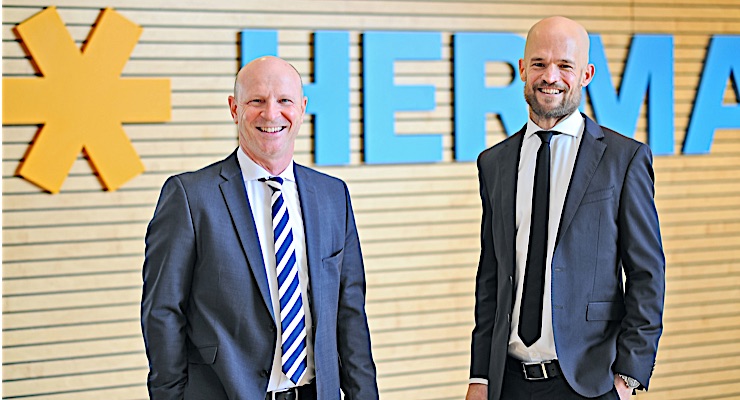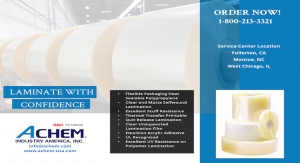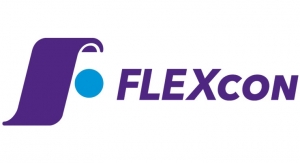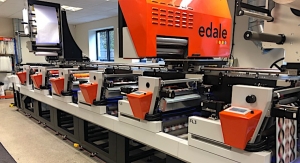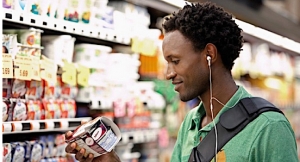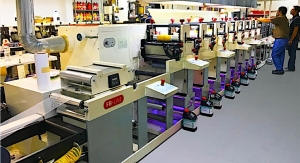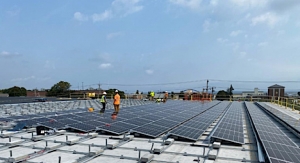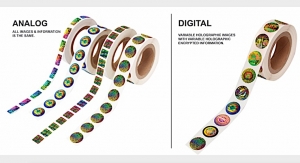Greg Hrinya, Editor03.30.21
Despite the challenging climate, Herma again grew sales in 2020. Business with self-adhesive materials, labels and labeling machines grew by around 5%, from 364.4 million euros in the previous year to 380.8 million euros.
“Given conditions shaped by extensive hygiene measures in production and extensive home working, this outcome reflects the great care, tremendous flexibility and huge commitment demonstrated by Herma’s employees. They enabled us to maintain full production and delivery capabilities throughout the year," says Herma managing director Sven Schneller.
As in 2019, high depreciation charges from the most recent investments in two new production facilities put pressure on earnings. “All in all, in view of the circumstances, we have reason to be satisfied. We are harvesting the fruits of our profitable organic growth strategy," continues Schneller.
Since the economic fallout from COVID-19 cannot yet be fully assessed from a global perspective and the impact of the Brexit deal remains uncertain, he explains, Herma’s outlook on the current year is very cautious. “We now have to focus all our efforts on re-affirming 2020’s strong sales and generating moderate single-figure growth. Sales and incoming orders in the first two months of the current fiscal year indicate that it’s an ambitious but achievable target.”
The number of employees edged up year-on-year, from 1,097 to 1,106. The export ratio increased from 61% to 62.8%.
The Self-adhesive Materials Division benefited substantially from the new coating plant in Filderstadt, Germany, which entered service in the spring of 2020. Its start-up enabled Herma to distribute customer orders between two autonomous production facilities and thus implement especially thorough hygiene measures. Sales rose by 8% year-on-year, from 223.7 to 241.1 million euros.
“Looking ahead, the new plant also gives us every opportunity to expand further in particularly lucrative product segments," remarks Guido Spachtholz. He became managing director at the start of 2021 following the planned retirement of Thomas Baumgärtner after 16 years with Herma.
Business in the Labels Division, where sales fell slightly from 84.5 to 82.6 million euros, was shaped by highly contrasting trends. Retail lockdowns and the shift to home working reduced the volume of office label sales across Europe. “On the other hand, school products performed exceptionally well and were bolstered by targeted online activities," comments Schneller. Production stoppages in cyclical business sectors, such as automotive and chemicals, curtailed the demand for industrial labels. Conversely, HERMA expanded its role as a leading supplier of logistics labels for shippers, and recorded good figures with pharmaceutical and healthcare solutions. Thanks to its proven skills in the pharma segment, the Labeling Machines Division likewise resisted the general downward trend in machine building in Germany, and grew by 2%. Its sales climbed from 52.2 to 53.3 million euros.
“Our modular design concept allowed us to deliver to short deadlines," says Schneller. “This gave us a major advantage as disinfectant production was speedily ramped up and vaccine labeling capacities were expanded.”
“Given conditions shaped by extensive hygiene measures in production and extensive home working, this outcome reflects the great care, tremendous flexibility and huge commitment demonstrated by Herma’s employees. They enabled us to maintain full production and delivery capabilities throughout the year," says Herma managing director Sven Schneller.
As in 2019, high depreciation charges from the most recent investments in two new production facilities put pressure on earnings. “All in all, in view of the circumstances, we have reason to be satisfied. We are harvesting the fruits of our profitable organic growth strategy," continues Schneller.
Since the economic fallout from COVID-19 cannot yet be fully assessed from a global perspective and the impact of the Brexit deal remains uncertain, he explains, Herma’s outlook on the current year is very cautious. “We now have to focus all our efforts on re-affirming 2020’s strong sales and generating moderate single-figure growth. Sales and incoming orders in the first two months of the current fiscal year indicate that it’s an ambitious but achievable target.”
The number of employees edged up year-on-year, from 1,097 to 1,106. The export ratio increased from 61% to 62.8%.
The Self-adhesive Materials Division benefited substantially from the new coating plant in Filderstadt, Germany, which entered service in the spring of 2020. Its start-up enabled Herma to distribute customer orders between two autonomous production facilities and thus implement especially thorough hygiene measures. Sales rose by 8% year-on-year, from 223.7 to 241.1 million euros.
“Looking ahead, the new plant also gives us every opportunity to expand further in particularly lucrative product segments," remarks Guido Spachtholz. He became managing director at the start of 2021 following the planned retirement of Thomas Baumgärtner after 16 years with Herma.
Business in the Labels Division, where sales fell slightly from 84.5 to 82.6 million euros, was shaped by highly contrasting trends. Retail lockdowns and the shift to home working reduced the volume of office label sales across Europe. “On the other hand, school products performed exceptionally well and were bolstered by targeted online activities," comments Schneller. Production stoppages in cyclical business sectors, such as automotive and chemicals, curtailed the demand for industrial labels. Conversely, HERMA expanded its role as a leading supplier of logistics labels for shippers, and recorded good figures with pharmaceutical and healthcare solutions. Thanks to its proven skills in the pharma segment, the Labeling Machines Division likewise resisted the general downward trend in machine building in Germany, and grew by 2%. Its sales climbed from 52.2 to 53.3 million euros.
“Our modular design concept allowed us to deliver to short deadlines," says Schneller. “This gave us a major advantage as disinfectant production was speedily ramped up and vaccine labeling capacities were expanded.”

